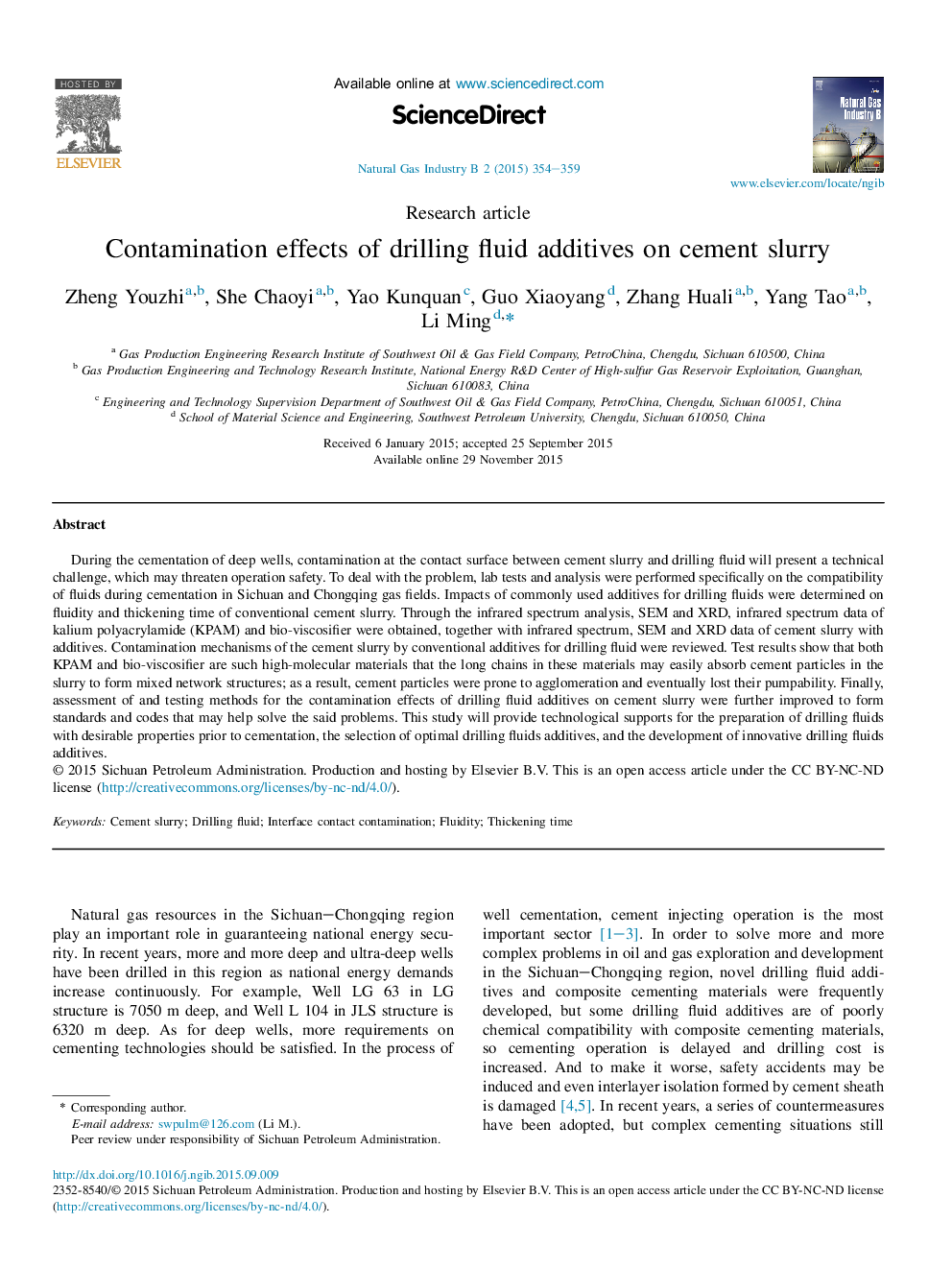| Article ID | Journal | Published Year | Pages | File Type |
|---|---|---|---|---|
| 1747832 | Natural Gas Industry B | 2015 | 6 Pages |
During the cementation of deep wells, contamination at the contact surface between cement slurry and drilling fluid will present a technical challenge, which may threaten operation safety. To deal with the problem, lab tests and analysis were performed specifically on the compatibility of fluids during cementation in Sichuan and Chongqing gas fields. Impacts of commonly used additives for drilling fluids were determined on fluidity and thickening time of conventional cement slurry. Through the infrared spectrum analysis, SEM and XRD, infrared spectrum data of kalium polyacrylamide (KPAM) and bio-viscosifier were obtained, together with infrared spectrum, SEM and XRD data of cement slurry with additives. Contamination mechanisms of the cement slurry by conventional additives for drilling fluid were reviewed. Test results show that both KPAM and bio-viscosifier are such high-molecular materials that the long chains in these materials may easily absorb cement particles in the slurry to form mixed network structures; as a result, cement particles were prone to agglomeration and eventually lost their pumpability. Finally, assessment of and testing methods for the contamination effects of drilling fluid additives on cement slurry were further improved to form standards and codes that may help solve the said problems. This study will provide technological supports for the preparation of drilling fluids with desirable properties prior to cementation, the selection of optimal drilling fluids additives, and the development of innovative drilling fluids additives.
